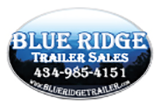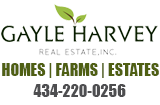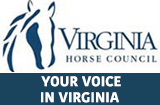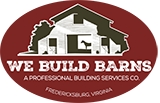Improve Your Riding with Ground Poles
Submitted by: Connie Warner, Warners Sporthorses
Phone: 804-721-0054
Email Address: violin123911(at)hotmail.com
Date Added: 9/11/2011
Ground poles, otherwise known as cavalletti, aren't just for jumping horses and riders. They can benefit anyone from dressage to western riders. They can help to loosen up an older, stiff horse. They also be used to teach dressage horses to lengthen their trot stride, instead of taking quicker, shorter steps.
Cavalletti exercises can be as simple or as complex as you want to make them. First thing is to learn a few simple terms.
Impulsion- The horse uses his hindquarters to drive himself forward. The horse shifts his weight to his back end causing his forehand to lighten and lift. A horse that uses his hindquarters as an engine will stay sounder and healtier longer and is a joy to ride.
Scope- The athletic ability of an individual horse. The term is generally used in accordance to jumping abilty, but can also apply to a horse's stride. A horse's scope of stride can be improved with cavalletti work.
Benefits of Using Ground Poles for Your Horse
* Become more relaxed and flexible.
* Develop rhythmic gaits
* Encourages him to push off harder with his hindquarters.
* Therapeutic benefits for older horses and those with back and hock problems .
* A teaching aid for developing the collected and extended trots.
* Improves a western horse's jog.
* Greatly improves a hunter and jumper's balance, stride length, pace, ability to judge the distance to a jump, and strengthens the muscles used during jumping especially the hindquarters. Regular use of ground poles will greatly improve your horse's jumping ability without causing lameness and behavior problems caused by excessive jumping of fences.
Benefits of Using Ground Poles for the Rider
* Builds confidence in their riding ability.
* Become more aware of their horse's rhythm or lack of, impulsion or lack of, and improve their ability to judge distance.
* Ground poles demand precise riding in order to get the maximum benefit.
* Builds rhythm in the rider. By posting over cavalletti, they learn they can influence their horse's trot.
Equipment Needed
* Tape measure (25' is ideal).
* At least 3 wooden poles (6' wooden landscape poles work well, avoid PVC since they tend to roll easily).
* Opitional..wooden blocks with notches cut out to hold the end of the poles in place.
* Flat, level surface in an arena or field.
* Person on the ground to assist with measuring poles.
How To
1. If your horse has never seen a ground pole, begin by walking or leading your horse over a single pole. If you are leading, be sure to stand off to the side in case your horse decides to jump over the pole. Repeat until your horse calmly walks over the pole.
2. Add a second pole 4' away from the first pole.
3. Finally add a third pole 4' away from your second pole.
4. After your horse calmly walks over all three poles; Roll your poles inward until they are all spaced 3'6" apart. This is the recommended distance for trotting poles regardless of the horse's height or stride length.
5. Always approach your poles in a straight line. Ideally you should give yourself at least three straight strides before the poles. Before you get to your poles be sure your horse is moving forward in a comfortable working trot. Slow your horse slightly before you actually go over your poles. You should ride a clear rhythmic trot over each pole. If he races over them and you can't figure out where his feet went but somehow he got over them, then you are going too fast!
6. If you have done your ground poles correctly, you may notice your horse begin to stumble over the poles. This probably means that the scope of his stride has increased. This means he has more adjustabilty in his trot. His ability to take a longer step and shorter step is improving. As your horse grows in strength, roll your poles out in increments of 3". If you wish to shorten his step, roll your poles inwards in increments of 3". This process needs to be done according to each individual horse's ability.
A Quick Word on Head and Neck Position
In short, don't worry about how your horse holds his head and neck. Your job as a rider is to make sure your horse is moving forward without dragging his front end around. He should move forward enthusiastically. His walk should march, his trot is rhythmic and elastic and his canter should be lifting and rocking. When a horse is using his hindquarters as an engine, his head and neck will find their correct place on their own. But it is your job to encourage and inspire your horse to move forward!
Connie Warner is a ARIA certified instructor and William Woods University Equestrian Science graduate. She owns and operates a hunter/jumper, dressage training and lesson barn in Charles City, VA. Her website is www.WarnersSporthorses.com
|



